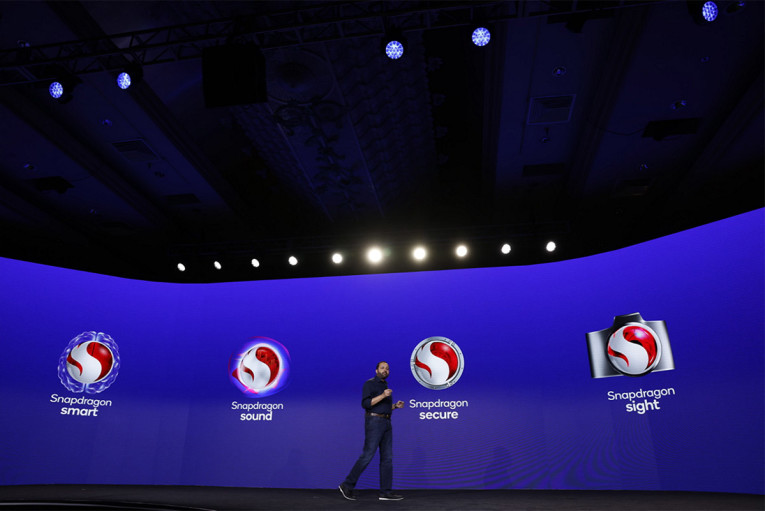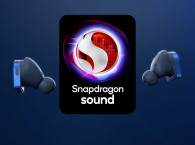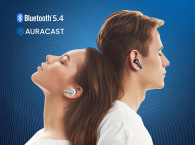
These Gen 2 audio chipsets will be powering countless OEM products in 2023, and complement the latest generation Snapdragon 8 Gen 2 mobile devices, on which countless clone brands count on. Of course, for this second generation devices, Qualcomm also identified the main requirements for audio product differentiation, as highlighted in the latest 2022 State of Sound Report, which lists spatial audio support in true wireless earbuds, high on the list.
Of course, although most audio manufacturers can easily just copy the external appearance of Apple's latest products, they rely upon a company such as Qualcomm to supply the "brains" and potentially part of the ecosystem needed to support the latest features, such as spatial audio. And although no content sources or audio formats could be named at this stage, Qualcomm mentions that the second generation Snapdragon Sound chips will offer spatial audio with dynamic head tracking features, combined with aptX Adaptive codecs (including lossless and low latency streaming), and naturally Bluetooth LE Audio support.
Also added to Snapdragon Sound Gen 2 SoCs for the much needed improved product iterations, is Qualcomm’s third-generation of Adaptive Active Noise Cancellation, and improved Adaptive Transparency Mode with automatic speech detection, allowing users to transition from situations where speech intelligibility is prioritized and situations that require strong noise-cancellation of environmental noises. For audio device developers, enhanced ANC technology helps solve commonly faced issues such as wind noise, howling and adverse events.
Qualcomm is also expanding its Snapdragon Sound Technology Suite portfolio with new SoCs optimized for speakers, mid-tier earbuds and lossless audio support for stereo headsets, all fully qualified to support the new Bluetooth LE Audio use cases including Auracast for broadcast audio.

"The next-generation Qualcomm S5 and S3 platforms have been designed to deliver the rich features that consumers want most, while also delivering ultra-low power performance. We were first to deliver Lossless audio over Bluetooth and since then, we’ve continued to innovate," says James Chapman, vice president and general manager, Voice, Music & Wearables, Qualcomm Technologies International, Ltd. "We know from our 2022 State of Sound consumer research that more than half of consumers say they will be seeking out support for spatial audio on their next set of wireless earbuds. I’m excited to say we are bringing support for spatial audio with dynamic head-tracking to Snapdragon Sound technologies, lossless audio for the new Bluetooth LE Audio specification, and even lower latency on our latest platforms."
"Our State of Sound survey this year also highlighted growing consumer interest in Bluetooth LE Audio, with over a third of respondents interested in new user experiences like Auracast broadcast audio. We have worked closely with the Bluetooth SIG to ensure these new platforms are fully qualified to support this use case," adds Chapman.

The Details
The new Qualcomm S5 and S3 Gen 2 Sound Platforms support dual-mode with Bluetooth 5.3, integrating the best of LE Audio and classic Bluetooth to support smooth feature adoption of LE Audio. The Gen 2 platforms are designed to support LE Audio features such as Auracast, Unicast Voice, Unicast Music and Gaming. For earbuds, there is support for Auracast Broadcast audio. Auracast will also enable locations to broadcast Bluetooth audio to enhance the visitor experience, for example tuning into a shared TV in an airport, bar, or gymnasium.
With Snapdragon Sound, the Qualcomm S5 Gen 2 Sound Platform supports lossless audio with enhanced robustness at up to 48kHz sample rate. The gaming mode offers lower end to end latency at 48ms for smartphone users, including a voice back-channel for in-game chat. Designed to bring the best experience possible for hands free calling, these platforms also support 32kHz super wideband voice calls for crystal clear calls, with Qualcomm aptX Voice technology, and up to 3-microphone Qualcomm cVc Echo Cancelling and Noise Suppression (ECNS).
This solution is designed to optimize round trip latency between smartphone and earbuds to a more natural and immersive spatial audio experience. On the phone, the spatialization and stereo rotation is supported by Snapdragon 8 Gen 2, and on the earbud side the QCC5181 delivers earbud to earbud cross head rotation alignment, low power consumption for the earbuds for longer periods of wear, optimized latency for a lag free experience and our own proprietary head orientation algorithm.
The Qualcomm S5 Gen 2 Sound Platform supports 3rd generation Qualcomm Hybrid Adaptive Active Noise Cancellation (ANC), which improves the listener experience by providing increased precision and noise cancelling depth, solving commonly faced issues such as wind noise or howling, with fast and reliable detection. The SoCs provide a natural full band Transparency mode (sampled at 64KHz), with effective occlusion mitigation delivering an instinctive and reliable talking experience. This improved experience during conversations is enhanced by the SoC’s automatic speech detection. The Qualcomm S5 Gen 2 Sound Platform also supports adaptive Transparency modes, offering smooth transitions between immersive noise cancelling and natural sounding pass-through when a listener needs to hear the world around them. It also brings adaptive noise cancelling to earbuds, with its low power, wireless tuning.
The new Qualcomm Gen 2 devices are now sampling to developers and manufacturers, with commercial products coming in the second half of 2023.

Market Perspective
"Qualcomm’s latest S5 and S3 Gen 2 Sound Platforms represent another step toward forming the Bluetooth LE Audio ecosystem. They also provide further insight into how audio chipset vendors will incorporate innovative LE Audio features while continuing to differentiate in the audio space," says Andrew Zignani, Wi-Fi, Bluetooth, & Wireless Connectivity, Research Director at ABI Research.
"Most leading Bluetooth wireless chipset vendors addressing the audio market today offer dual-mode radio solutions (i.e., Bluetooth Classic + Bluetooth LE) as part of their product portfolios. Over time, these dual-mode radio solutions will increasingly support LE Audio functionality and become dual-mode LE audio solutions (i.e., Classic Audio + LE Audio). This will help to enable new Auracast broadcast audio use cases while allowing vendors to continue to innovate on their product offering via additional features and performance differentiators, like those supported by Qualcomm’s latest platforms," the market research firm adds.
"However, one of LE Audio’s greatest achievements will be to open the audio market to new entrants and make it easier to develop lower cost, lower complexity, non-proprietary products that have better synchronization, lower latency, improved power consumption, and that can enable new broadcast audio and assistive listening use cases in public venues. Over time, as the installed base of LE audio smartphones, tablets, PCs, TVs, and other source devices grow, these standalone LE Audio-only devices will begin to emerge. Therefore, two distinct strategies are likely to form - incumbents in the audio space will likely maximize their existing product offerings and incorporate LE Audio functionality via dual-mode solutions, while those without an existing market presence can capture a growing portion of the audio market via innovative LE audio-only product designs," explains Andrew Zignani.
Combined, ABI Research forecasts that annual LE Audio source and sink device shipments will reach three billion units by 2027. By 2030, ABI Research expects there will be nearly 2.5 million Auracast broadcast audio deployments globally across the different use cases, including assistive listening applications and multi-language support. This forecasts are included in ABI Research’s recently published "LE Audio: The Future of Bluetooth Audio" market research note.
www.qualcomm.com







